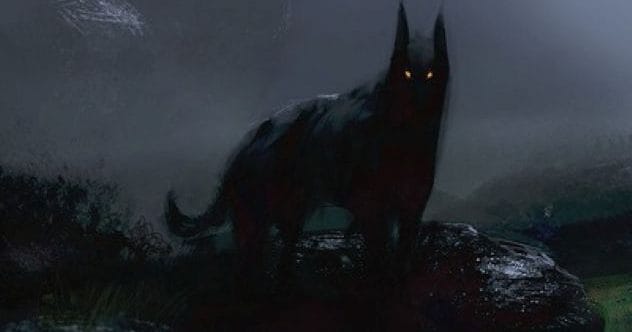When you hear “English Renaissance drama,” your mind probably jumps to Shakespeare, grand speeches about love, and perhaps a few tragic deaths. We often picture these plays as highbrow, sophisticated affairs. But here’s a little secret: Renaissance theatre, flourishing between 1558 and 1642, was the blockbuster entertainment of its day. And just like our modern blockbusters, these plays were often packed with shocking twists, over-the-top gore, and some seriously saucy humor!
While deep monologues were certainly part of the package, audiences craved excitement. They loved wild situations, dramatic demises, and jokes that would make a sailor blush. Get ready to have your perception of classic theatre turned upside down, because here are 10 of the weirdest and most astonishing moments from English Renaissance plays. Be warned, spoilers lie ahead (though, let’s be honest, these plays are over 400 years old!).
10. A Kiss of Death: Necrophilia in The Revenger’s Tragedy
Revenge tragedies were all the rage, and Thomas Middleton’s The Revenger’s Tragedy (1606) takes this bloody genre to a whole new, darkly comic level. This play doesn’t just flirt with disguise and deception; it dives headfirst into morbidly sexual territory. Essentially, it features a scene that’s uncomfortably close to necrophilia, though the character involved is tricked into it.
Our protagonist, Vindice, is out for revenge against the Duke who poisoned his beloved fiancée nine years prior because she wouldn’t sleep with him. In a rather unsettling move, Vindice has been carrying her skull around ever since. He lands a job as a pimp for the Duke (disguised, of course). For his grand revenge, Vindice poisons his dead lover’s skull, fixes it onto a mannequin dressed as an alluring woman, and presents it to the Duke. Thinking he’s about to get lucky with a shy prostitute, the Duke plants a big kiss on the deadly effigy, described as “like a slobbering Dutchman.” His teeth and tongue promptly rot away. Poetic justice, or just plain weird?
9. Out of Place Predator: Lioness Attack in As You Like It
Shakespeare’s As You Like It (1599) is famous for the “All the world’s a stage” speech and its delightful mix of love at first sight and gender-bending disguises. The hero, Orlando, is driven into the forest by his cruel older brother, Oliver. Being a comedy, a happy reconciliation is expected, but Shakespeare’s method is certainly… creative.
Orlando stumbles upon Oliver sleeping under a tree, with a lioness lurking nearby, ready to pounce. Never mind that lions had been extinct in Europe for millennia – Shakespeare wasn’t too bothered by historical accuracy here! Orlando, after a moment of considering letting his brother become cat food, decides to fight the lioness. He gets wounded, “The lioness had torn some flesh away,” but his bravery makes Oliver see the error of his ways. A wolf might have been more geographically appropriate, but a lioness definitely adds a touch of the exotic and bizarre.
8. A Demonic Pet: The Devil-Dog in The Witch of Edmonton
Penned in 1621 by William Rowley, Thomas Dekker, and John Ford, The Witch of Edmonton drew inspiration from the real-life case of Elizabeth Sawyer, executed for witchcraft that same year. In the play, Sawyer is ostracized by her community after false accusations of witchcraft. Deciding she has nothing left to lose, she embraces the dark side and sells her soul to the Devil for revenge.
But the Devil doesn’t appear in his usual suave, human form. Instead, he manifests as a dog named Tom (though played by a human actor on stage, naturally). Sawyer is portrayed somewhat sympathetically, but her interactions with this Devil-Dog are weirdly and uncomfortably sexual. She coos at him, “Stand on thy hind-legs up. Kiss me, my Tommy,” and later demands, “Let’s tickle.” While tales of witchcraft often included sexual encounters with the Devil, it’s significantly stranger when he’s in canine form.
7. An Ass for a Head: Bottom’s Transformation in A Midsummer Night’s Dream
Shakespeare’s magical comedy, A Midsummer Night’s Dream (written around 1595-1596), is set in an enchanted forest filled with fairies, so you just know some strange things are bound to happen. The play has a distinct, dream-like atmosphere. Midway through, the mischievous sprite Puck, playing on the double meaning of Bottom’s name (as in, an ass), magically transforms his head into that of a donkey.
To make things even weirder, Puck had previously used a love potion on Titania, the Queen of the Fairies, making her fall instantly in love with the first creature she sees upon waking. That creature? None other than the donkey-headed Bottom. Despite his bizarre appearance, she declares her love: “So is mine eye enthralled to thy shape… On the first view to say, to swear, I love thee.” Thankfully, it’s a comedy, so Bottom eventually gets his human head back, but the image of the Fairy Queen doting on a man with a donkey’s head is pure, delightful absurdity.
6. Deadly Decor: Poisoned Portrait and Hat in The White Devil
John Webster’s The White Devil (1612) is another play inspired by real events, specifically the murder of Vittoria Accoramboni. Webster’s version is a classic Renaissance tragedy, brimming with adultery, corruption, and, of course, murder. Brachiano is smitten with Vittoria, but both are married. In the world of tragedy, there’s only one solution to such an inconvenient problem.
Brachiano’s wife has a nightly ritual of kissing a portrait of her husband. Someone cleverly applies poison to the portrait, and she dies. Vittoria’s husband, Camillo, meets his end in an even more outlandish way: during a gymnastics competition (a common pastime, apparently), Vittoria’s brother Flamineo breaks Camillo’s neck and stages it to look like an accident with the vaulting horse. Later, Brachiano himself is killed when poison is sprinkled into the helmet he wears during a tournament, causing him to scream, “O, my brain’s on fire!” As if that wasn’t enough, he’s then strangled for good measure. These playwrights loved their creatively poisoned objects!
5. Instant Adult: Merlin Being Born as a Grown Man in The Birth of Merlin
When you picture the wizard Merlin, you probably see an old, wise man with a flowing white beard. Well, playwright William Rowley had a different origin story in mind. His play The Birth of Merlin (1622) introduces Joan, a woman pregnant by a mysterious stranger, and her brother, who conveniently happens to be a clown. The plot follows them wandering through a forest, looking for a father for her unborn child – a plan that seems questionable from the start.
It’s revealed that the Devil is the father, and instead of a baby, Joan gives birth to a fully grown man – Merlin himself! How this is physically possible is a question the play happily ignores. While Merlin being the son of a demon is part of traditional mythology (it’s what gives him his powers), the whole being-born-as-an-adult thing was Rowley’s unique, and very weird, contribution. Merlin’s clown-uncle even remarks on the oddity: “a child to speak, eat, and go the first hour of his birth… why, sister, this is monstrous.” You said it, clown!
4. A Dish Best Served…In a Pie: Cannibalism in Titus Andronicus
Often considered one of Shakespeare’s goriest and least performed plays, Titus Andronicus (c. 1588–1593) is a relentless cycle of revenge between Roman general Titus and Tamora, Queen of the Goths. Its sheer violence is so extreme that modern productions have reportedly caused audience members to faint!
The atrocities pile up quickly: Titus sacrifices one of Tamora’s sons and kills one of his own. Tamora’s remaining sons then murder a man to brutally assault Titus’s daughter, Lavinia, cutting off her hands and tongue to prevent her from identifying them. But Lavinia finds a way. As revenge, Titus captures her attackers, slits their throats (with Lavinia holding a basin to catch the blood), and then explains his gruesome culinary plan: “grind their bones to powder small / And with this hateful liquor temper it; / And in that paste let their vile heads be baked.” Tamora is then unknowingly served her sons baked into pies. It’s a truly stomach-churning moment that makes Titus a kind of proto-Mrs. Lovett.
3. Sibling Love Story: Incest in ‘Tis Pity She’s a Whore
John Ford’s play ‘Tis Pity She’s A Whore (c. 1626–1633) courted controversy from the moment it was written by directly depicting an incestuous relationship. The play centers on the passionate, sexual love between a brother and sister, Giovanni and Annabella. What’s particularly unsettling is how their love is portrayed – as both deeply sinful and tragically sincere. Ford doesn’t overtly condemn or condone it; he presents it as an overwhelming, unstoppable force.
Giovanni gets Annabella pregnant, and she marries another man to hide their secret. The play culminates in a horrifying climax: Giovanni stabs Annabella, then bursts into a feast holding her heart impaled on a dagger, announcing their affair to everyone. He boasts that “For nine months space, in secret I enjoy’d / Sweet Annabella’s sheets.” This shocking revelation causes their father, Florio, to die of sheer shock. Talk about a dramatic family dinner!
2. Bear Necessities: The Famous Bear in The Winter’s Tale
Shakespeare’s The Winter’s Tale (c. 1610–1611) starts off like a typical tragedy, but then Act III, Scene iii arrives, and things take a famously bizarre turn. The character Antigonus abandons the baby Perdita in a desolate landscape, and then comes one of the most iconic and perplexing stage directions in all of theatre: “Exit, pursued by a bear.” While a real bear wasn’t likely used on stage (though bear-baiting was a popular, gruesome entertainment at the time), the sudden appearance and chase is startling and almost comically abrupt.
But the bear isn’t the only oddity. Queen Hermione, Perdita’s mother, seemingly dies of grief. Years later, her husband commissions a statue in her memory. In a truly magical and unexplained twist, the statue comes to life, and Hermione is restored! The play also features a scene with a comically innocent servant who doesn’t understand the sexual connotation of the word “dildo,” possibly marking its first recorded use. Thanks for the unexpected laughs and head-scratchers, Shakespeare!
1. Howling Mad: Lycanthropy in The Duchess of Malfi
John Webster’s The Duchess of Malfi (1613) is another dark tale loosely based on real historical events. It tells the story of the titular Duchess who secretly marries a man below her social station. This act enrages her two powerful brothers, setting off a horrifying chain of spying, betrayal, and murder. Towards the play’s grisly end, it’s revealed that one of the brothers, Ferdinand, has been driven mad by the guilt of murdering his sister. His madness takes a peculiar form: lycanthropy, the delusion that he has turned into a wolf.
A doctor explains that Ferdinand’s condition causes him to “Steal forth to church-yards in the dead of night, / And dig dead bodies up.” He was even found “Behind Saint Mark’s church, with the leg of a man / Upon his shoulder; and he howl’d fearfully.” Meanwhile, the other brother, the Cardinal, shows no remorse. After revealing his part in his sister’s murder to his mistress, he silences her by forcing her to kiss a poisoned bible, killing her instantly. Renaissance playwrights truly had a penchant for dispatching characters with cleverly poisoned everyday objects!
So, the next time you think of English Renaissance plays as merely stuffy or old-fashioned, remember these wild and wonderfully weird moments. These playwrights knew how to entertain, shock, and sometimes, just completely baffle their audiences!
What’s the weirdest thing you’ve ever seen or read in a classic play? Share your thoughts in the comments below!










